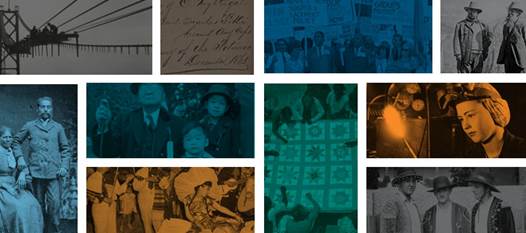By Sherri Berger, Product Manager, California Digital Library (UCOP). The ten libraries of the University of California system hold a dazzling array of unique materials, including photographs, newspapers, maps, oral histories, films, ephemera, and more. Documents of world events and expressions of human culture, these materials are essential items of study for scholars, students, and the general public. In many cases, the UC campus libraries hold the only existing copies in the world.
Unfortunately, until recently, many of these vast and valuable resources were effectively invisible to researchers because they were not available online. Why? For years, all of the UC libraries had been digitizing their remarkable research materials. But several of them lacked the technology needed to support — robustly, routinely, and at scale — the next steps of storage, management, description, and public access. This lack of a post-digitization “pipeline” had slowed or even stalled the digital collections building program on almost every campus.
The technical pipeline
The Sautter Award winning UC Libraries Digital Collection (UCLDC) project was a two-year initiative to establish a technical pipeline for all UC libraries to create, manage, and provide access to their digital assets. In July 2013, following four years of systemwide planning, a team based at the California Digital Library (CDL) and IST Research Technologies at UC Berkeley, in close partnership with staff members at all ten campus libraries, embarked on the project.
In September 2015, the project team released three production services:
- A shared digital asset management system (DAMS), based on the open-source Nuxeo platform
- A metadata harvester that aggregates and indexes digital content
- A user-focused public interface (Calisphere) that provides seamless access across the entire aggregation, plus an API that allows for customization and “remix”
These services are now heavily in use, resulting in broad, aggregated access to an unprecedented number of the university’s most unique and remarkable research collections.
The growth of digital collections
The UCLDC project has helped several campus libraries significantly ramp up their digital collections programs. Since the project’s conclusion in September 2015, four university libraries have become highly active users of the shared DAMS, and two affiliated libraries are currently in testing. In the first six months alone, the libraries used the DAMS to manage 68 collections, and to subsequently publish a total of 27 of them to Calisphere – 18 of which had never before been available online. They include, for example, UC Merced’s Dunya Ramicova collection, one of the few complete collections of costume designs by a single designer held by an academic institution; and UC Riverside’s Sabino Osuna collection, which contains rare glass plate negatives of the Mexican Revolution.
The project has also incentivized campus libraries with their own digital collections platforms to participate in the systemwide aggregation, since the harvester provides an easy way for them to extend access to their materials through Calisphere and the Digital Public Library of America. UC San Diego, for instance, has added over 80,000 items to the aggregation through the harvest in the past year.
A treasure trove for research
Meanwhile, the UCLDC project has also had an impact on its ultimate audience: researchers. When the new Calisphere site was released in September, it immediately contained 400,000 objects, which was 70% more content than in its previous iteration (due entirely to the scalable harvest infrastructure developed). The aggregation has continued to grow quickly in the months since, notably with the participation of new and previously inactive institutions at UC and throughout the state. It now contains over 600,000 objects, and the rapid pace of growth is on track to continue.
California State Librarian Greg Lucas sums up the excitement around Calisphere from the end-user perspective: “Calisphere is one of those resources that librarians, researchers and the global public have been waiting their whole lives for without even knowing it. Not only has it brought together an unparalleled array of primary source material, it has done so in a clean, easily-searchable interface that everyone can use. Calisphere’s redesigned site is, in one word, awesome.”







